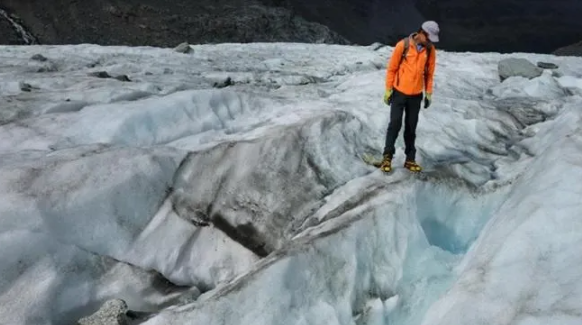How Post-Glacial Ecosystems Can Mitigate Climate Change (GS Paper 3, Environment & Ecology)

Why in the News?
- A groundbreaking global study titled "The Development of Terrestrial Ecosystems Emerging After Glacier Retreat” has recently been published in Nature.
- This research presents a compelling argument that while the retreat of glaciers exacerbates climate change by diminishing surface reflectivity and releasing stored carbon, the resultant post-glacial ecosystems could play a significant role in mitigating these effects.
Understanding Glaciers
Formation of Glaciers:
- Snow Accumulation: Glaciers form in regions where snow accumulates year-round and does not completely melt in the summer.
- Snow Compression: Successive layers of snow compress the underlying layers, transforming them into ice over time.
- Firn Formation: Snow that survives a melting season becomes firn, a granular type of snow.
- Ice Crystal Growth: As more snow accumulates, firn turns into solid ice as the crystals grow and interconnect.
Global Distribution:
- Extent: Glaciers cover approximately 700,000 square kilometers, predominantly in Antarctica.
- Locations: Besides Antarctica, glaciers are found in Greenland, the Arctic islands of Canada, Alaska, Patagonia, the Himalayas, and in parts of Oceania like New Zealand and Papua New Guinea. They typically develop in high-latitude or high-elevation areas with heavy snowfall and cold temperatures.
Glacier Retreat:
- Definition: Glacier retreat occurs when ice melt surpasses the accumulation of new snow, leading to a reduction in glacier mass.
- Impacts: This process is accelerated by climate change, contributing to rising sea levels, altered water supplies, and changes in ecosystems.
Key Highlights of the Study
Study Overview:
- Research Team: The study was led by Professor Gentile Francesco Ficetola and Silvio Marta, with contributions from Dr. Pritam Chand (Central University, Punjab) and Professor Milap Chand Sharma (Jawaharlal Nehru University).
- Methodology: The researchers analyzed over 1,200 soil samples from nearly 50 glaciers worldwide, including the Gangotri and Bara Shigri glaciers in the Indian Himalayas.
Key Findings:
Emergence of New Ecosystems:
- The retreat of glaciers exposes barren lands that, over time, are colonized by microorganisms, mosses, and grasses.
- These early colonizers contribute to soil formation and the development of more complex life forms.
Climate Change Mitigation:
- As these new ecosystems develop, they can enhance carbon capture, potentially offsetting some of the carbon emissions associated with glacier retreat.
- Effective management of these ecosystems could bolster their role in climate change mitigation.
Ecological and Hydrological Importance:
- In regions like the Himalayas, emerging ecosystems are crucial for regulating water availability.
- They influence river systems that provide drinking water, support agriculture, and contribute to hydropower generation.
Biodiversity and Economic Benefits:
- The biodiversity in these areas could lead to discoveries with medicinal and agricultural potential.
- Additionally, these ecosystems offer opportunities for eco-tourism, which can support local economies.
Significance of Studying Post-Glacial Ecosystems in India
In India, understanding the development of post-glacial ecosystems is essential for several reasons:
- Water Resources: These ecosystems influence the water flow in rivers, impacting millions who depend on them for drinking, agriculture, and energy production.
- Biodiversity: They host unique plant and animal species that might offer new insights for medicine and agriculture.
- Economic Opportunities: Promoting eco-tourism can enhance local economies while encouraging conservation efforts.
Protecting and studying these emerging ecosystems is crucial for harnessing their ecological benefits and ensuring sustainable management of natural resources in the face of climate change.


